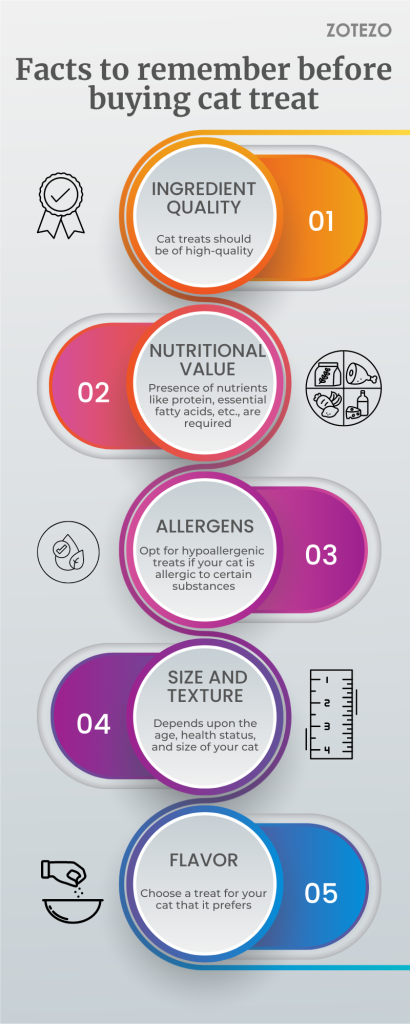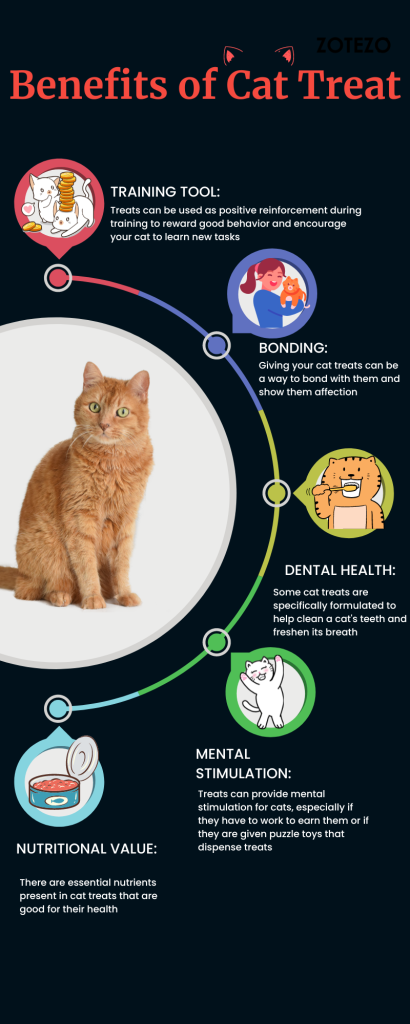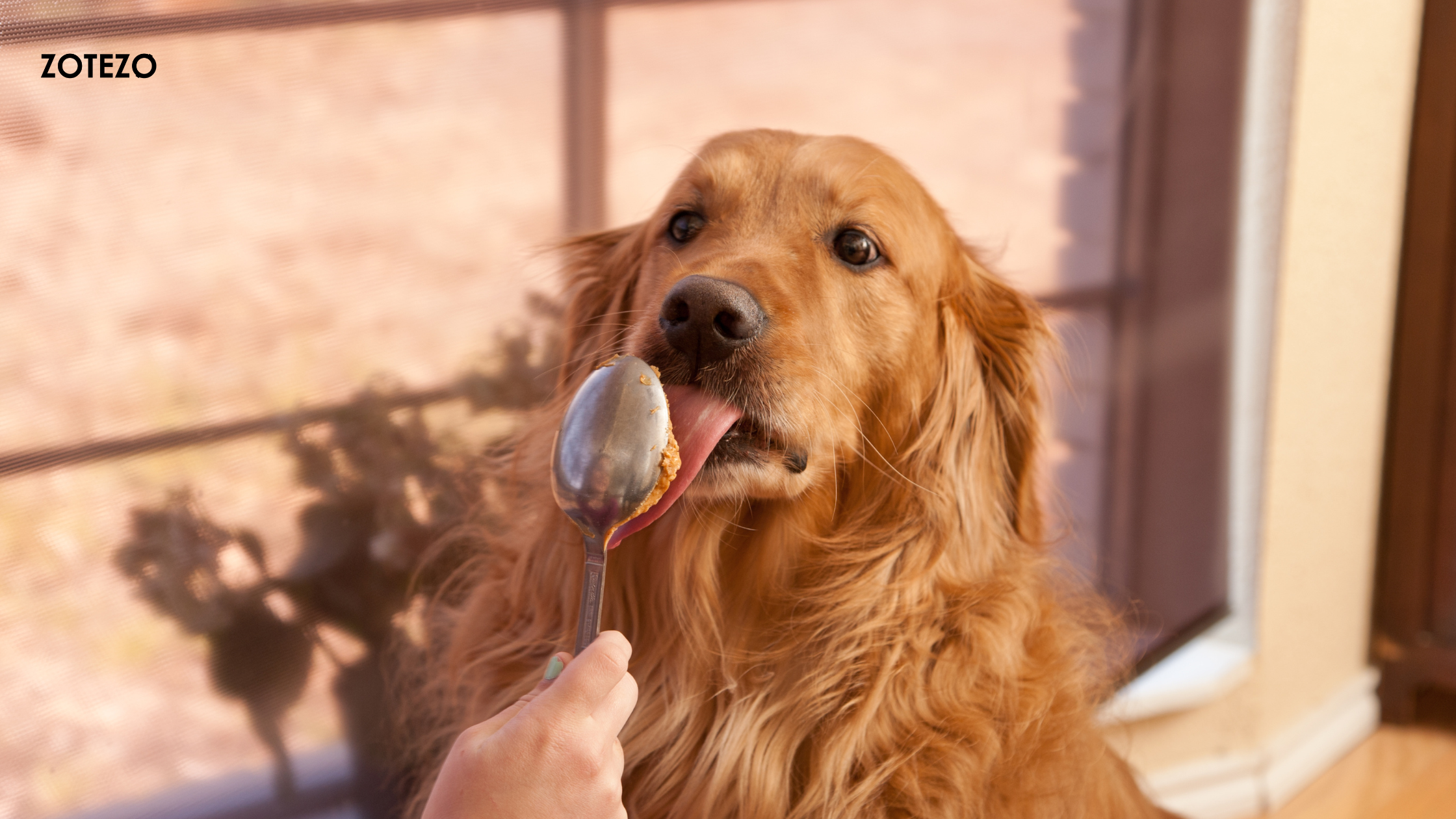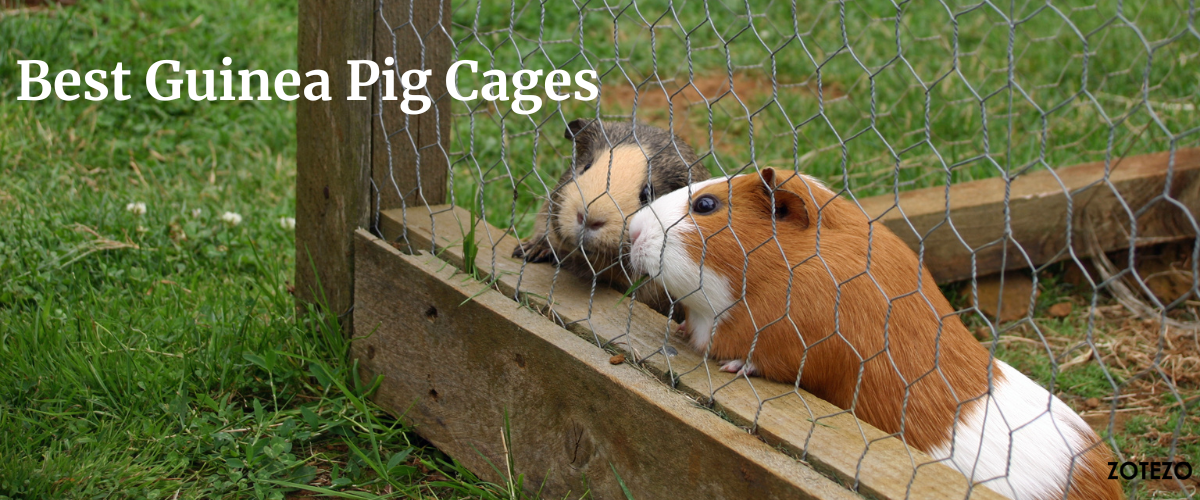Introduction
Does your kitty seem lazy, upset, fuzzy, and spends most of the time in her bed? One of the probable reasons can be that your cat does not feel energetic enough to play and remain active. Treats for cats, thus come on screen that helps your kitty to become more lively. In this blog, we will be throwing light on the best cat treats in the World.
Cat treats are small snacks or snacks that are specifically formulated and marketed for cats. They are typically high in protein and have a flavor that is appealing to cats. They can be used as a training tool, a reward, or simply as a way to give your cat a special treat. Besides, Choosing the best quality cat food with different ingredients can be very confusing but finding the best choice for your cat is also necessary.
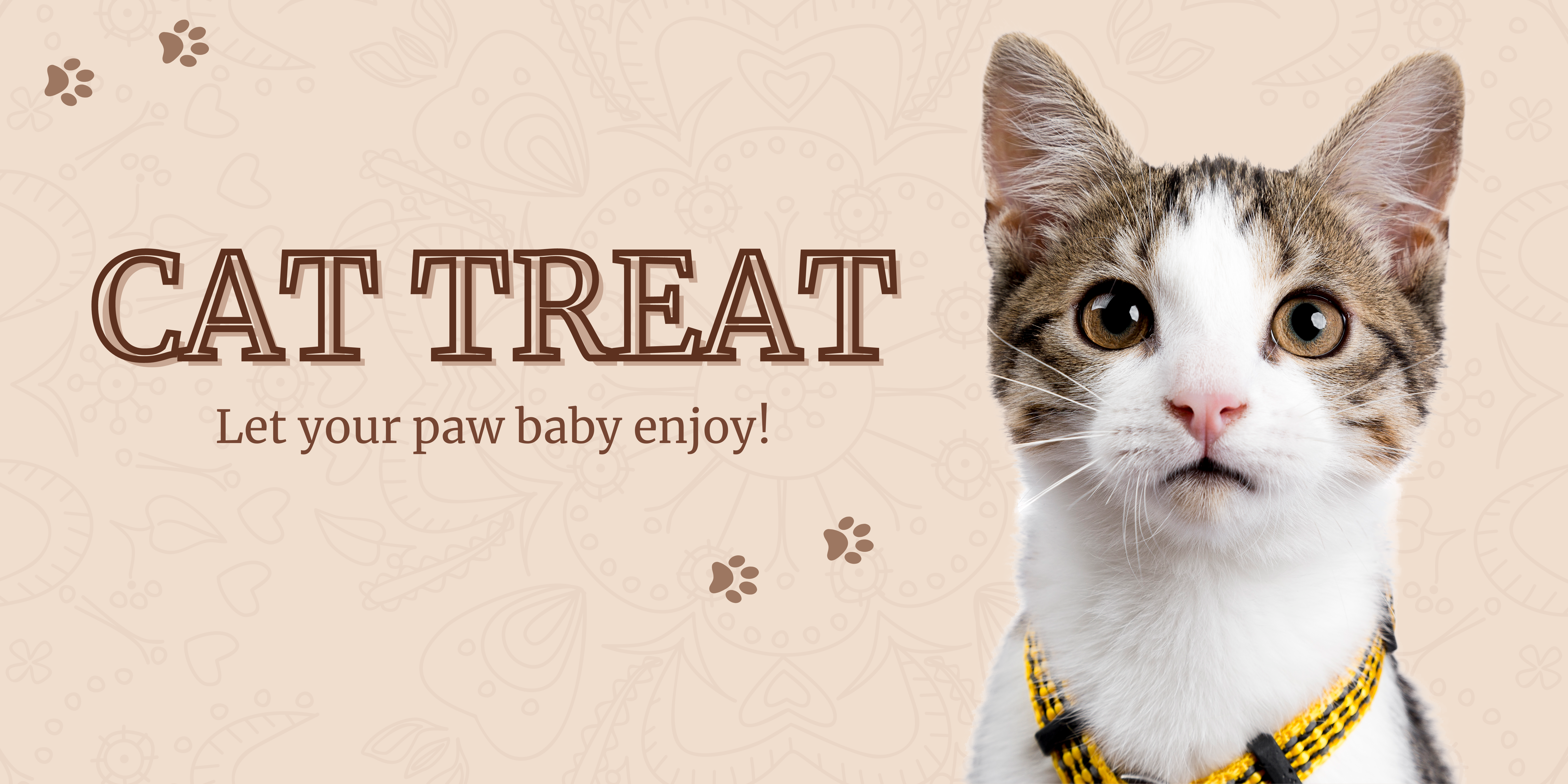
Find The Best around the world
Australia
Canada
France
Germany
India
Italy
Japan
Netherlands
Singapore
Spain
Sweden
UAE
UK
USA
Tips for choosing the right treats for cats for you
Types of cat treats:
Before choosing the best treat for your cats you should be aware of the wide spectrum of them and which one will be suitable for your beloved pet. Never forget that your kitty won’t be able to tell you in words if she likes that treat. Therefore, it’s important to choose treats that are appropriate for your cat’s age, size, and health needs, and to feed them in moderation as part of a balanced diet. It’s also a good idea to consult with your veterinarian before introducing any new treats into your cat’s diet.
It is important to choose treats that are appropriate for your cat’s age, size, and health needs, and to feed them in moderation as part of a balanced diet. It is also a good idea to consult with your veterinarian before introducing any new treats into your cat’s diet.
There are many types of cat treats available on the market:
Dried or freeze-dried protein treats:
These treats are made from real meat or fish and are a good source of protein for cats. They can be found in a variety of flavors, such as chicken, turkey, salmon, and tuna.
Soft treats:
These treats are soft and moist and are often used as a training tool or as a reward for good behavior. They can be found in flavors like chicken, beef, and salmon.
Baked treats:
These treats are made from a mixture of flour, water, and other ingredients and are baked to create a crunchy texture. They are often shaped like small cookies or biscuits and come in flavors like chicken, turkey, and salmon.
Wet treats:
These treats are similar to soft treats but are typically sold in cans or pouches and are meant to be served as a supplement to a cat’s regular diet. They are often made with real meat or fish and can be found in flavors like chicken, beef, and salmon.
Dental treats:
These treats are specifically formulated to help clean a cat’s teeth and freshen its breath. They are typically crunchy and have a texture that helps to remove plaque and tartar from the teeth.
When choosing cat treats, there are a few things to consider to ensure that you are selecting a healthy and appropriate option for your feline friend:
Ingredient quality:
Look for treats made with high-quality, real meat or fish as the first ingredient. Avoid treats made with fillers or by-products. While buying a cat treat, check the label if the following items are present because these are not good for your kitty.
- Corn, wheat, and soy: These ingredients are commonly used as fillers in pet food and treat and may be difficult for cats to digest. They can also trigger allergies or sensitivities in some cats.
- Artificial preservatives: Many treats contain artificial preservatives, such as BHA, BHT, and ethoxyquin, which may be harmful to cats.
- Artificial colors and flavors: These ingredients are often added to make treats more appealing to humans, but they offer no nutritional value for cats and may be harmful if consumed in large amounts.
- By-products: By-products, such as chicken by-products or meat by-products, are lower-quality ingredients that may contain parts of the animal that are not fit for human consumption, such as beaks, feet, and feathers.
Nutritional value:
Choose treats that provide some nutritional value, such as protein or essential fatty acids. Let’s see what certain ingredients in a cat treat that are healthy for your kitty.
- Protein: Real meat or fish is a good source of protein for cats and should be the first ingredient listed on the treat label.
- Essential fatty acids: Omega-3 and omega-6 fatty acids are important for a cat’s coat and skin health, and can be found in ingredients like fish oil and flaxseed oil.
- Fiber: Cats need a certain amount of fiber in their diet to help maintain a healthy digestive system and treats made with ingredients like pumpkin and sweet potato can be a good source of fiber.
- Antioxidants: Ingredients like blueberries, cranberries, and green tea extract are rich in antioxidants, which can help support a cat’s immune system.
Allergens:
If your cat has any known allergies or sensitivities, be sure to choose treats that do not contain any allergens. If you suspect that your cat has a food allergy, it is important to speak with your veterinarian. They can help you determine the cause of the allergy and provide guidance on how to manage it. It may be necessary to switch to a hypoallergenic diet and to avoid giving your cat treats or other foods that contain the allergen.
Size and texture:
Consider the size and texture of the treats, especially if you are using them as a training tool. Small, soft treats may be easier for your cat to eat and may be more appealing. Therefore, paw mommies and paw daddies should remember these minute details regarding the size and texture of cat treats.
- Size: Choose treats that are small enough for your cat to easily consume in one bite. This is especially important if you are using treats as a training tool, as larger treats may be more difficult for your cat to eat and may distract them from the task at hand.
- Texture: Cats have different preferences when it comes to the texture of treats. Some cats may prefer crunchy treats, while others may prefer softer treats. Consider your cat’s individual preferences and try a variety of textures to see what they like best.
- Dental health: If your cat has dental issues, such as missing teeth or gum disease, choose treats that are soft and easy to chew. Avoid treats that are hard and crunchy, as they may be more difficult for your cat to eat and may cause further dental problems.
Flavor:
Choose treats that have a flavor that your cat enjoys. If you’re not sure what your cat likes, you can try a variety pack or ask your veterinarian for recommendations. Cat treats are majorly available in a variety of flavors, including
- Chicken: Chicken is a popular flavor for cat treats and is often made with real chicken meat.
- Beef: Beef is another common flavor for cat treats and is often made with real beef.
- Fish: Fish flavors, such as salmon and tuna, are also popular among cats and may be made with real fish or fish meals.
- Turkey: Turkey is a less common flavor for cat treats but may be appealing to some cats.
- Other flavors: Cat treats are also available in flavors like liver, duck, and shrimp.
Advantages of using treats for cats
Training tool:
Treats can be used as positive reinforcement during training to reward good behavior and encourage your cat to learn new tasks. When training your cat, it’s important to be consistent, patient, and positive, and to start with simple tasks and gradually increase the difficulty as your cat becomes more skilled.
When using treats as a training tool, it’s important to choose treats that are small enough for your cat to easily consume in one bite and that have a flavor that your cat enjoys. You can use treats to reward your cat for completing a task or for exhibiting the desired behavior, such as sitting on command or using the litter box.
There are a few key ways to use treats as a training tool when working with your cat:
- Choose the right treats: Select treats that are small enough for your cat to easily consume in one bite and that have a flavor that your cat enjoys.
- Reward good behavior: Use treats to reward your cat for completing a task or for exhibiting the desired behavior, such as sitting on command or using the litter box.
- Be consistent: Use the same treats consistently when training your cat so that they learn to associate the treats with good behavior.
- Start small: Begin with simple tasks and gradually increase the difficulty as your cat becomes more skilled.
- Use treats in moderation: Treats should be used in moderation as part of a balanced diet and should not be the only form of reward used during training. You can also use other rewards, such as praise, petting, and play, to reinforce good behavior.
Bonding:
Giving your cat treats can be a way to bond with them and show them affection. Here are a few ways to use treats as a bonding tool:
- Hand-feed your cat treats: Hand-feeding your cat treats can be a way to build trust and strengthen your bond with them. It’s important to go slowly and let your cat approach you at their own pace and to stop hand-feeding if your cat becomes overstimulated or anxious.
- Play with your cat: Treats can be used as a reward during interactive play sessions, which can be a fun and bonding activity for both you and your cat.
- Use treats to reward good behavior: You can use treats to reward your cat for exhibiting desired behaviors, such as using the litter box or sitting on command. This can help to reinforce the bond between you and your cat and can also help to establish a positive and consistent routine.
Mental stimulation:
Treats can provide mental stimulation for cats, especially if they have to work to earn them or if they are given puzzle toys that dispense treats. For example, you can hide treats around the house and let your cat search for them, or you can use treats as a reward during training sessions. Puzzle toys that dispense treats as your cat plays with them can also provide mental stimulation and encourage your cat to engage in interactive play.
In addition to treats, there are other ways to provide mental stimulation for your cat, such as
- Providing toys: Cats need a variety of toys to keep them entertained, such as scratching posts, balls, and laser pointers.
- Encouraging play: Interactive play, such as playing with a fishing rod toy or chasing a toy mouse, can provide mental and physical stimulation for your cat.
- Providing a variety of environments: Cats can get bored if they are kept in the same environment all the time, so try to provide them with a variety of environments to explore, such as a window perch or a cat tree.
Dental health:
Some cat treats are specifically formulated to help clean a cat’s teeth and freshen its breath, which can help promote dental health. These treats are typically crunchy and have a texture that helps to remove plaque and tartar from the teeth. They may also contain ingredients that help to freshen the breath, such as parsley or mint.
Nutritional value:
There are essential nutrients present in cat treats that are good for their health. Cats can become extremely moody and often it has been observed that their mood swings are more severe than human beings. Cat treats usually come with various designs and shapes that excite the fur babies and they dive deep into that madness.
Disdvantages of using best cat treats
It is possible for cats to become accustomed to receiving treats and to look forward to receiving them, but it is not the same as being addicted to them in the way that a person might be addicted to a substance. Treats should be given in moderation as part of a balanced diet, and it is important to vary the types of treats that you give to your cat to prevent them from becoming bored with the same treats.
As with any type of food or treat, it is possible for cats to experience side effects after consuming treats. Some common side effects of cat treats are
Gastrointestinal upset:
Cats may experience vomiting or diarrhea after eating treats, especially if they are not used to them or if they consume too many treats at once.
Weight gain:
Overconsumption of treats can lead to weight gain in cats, which can contribute to obesity and related health problems.
Allergic reactions:
Some cats may have allergies to certain ingredients found in treats, which can cause symptoms such as itching, redness, swelling, and difficulty breathing.
Dental issues:
Some treats, especially those that are hard and crunchy, can cause dental problems in cats if they are not formulated to help clean the teeth.
Who should use treats for cats
Cat treats can be beneficial for anyone who shares their home with a feline friend. Whether you’re trying to teach your cat new tricks, encourage them to use their scratching post, or simply want to spoil them a little, treats can be a useful tool. Even older cats can benefit from treats as a way to provide them with extra nutrition or to entice them to play and stay active.
Treats can also be used to help shy or nervous cats feel more comfortable around people or in new environments. Just remember to choose treats that are appropriate for your cat’s age, health, and dietary requirements, and to use them in moderation to avoid overfeeding. Overall, cat treats can be a fun and rewarding way to interact with your cat and show them how much you care.
Recommended Dosage of best cat treats
The dosage of cat treats will depend on the size and nutritional needs of your cat, as well as the specific treatment that you are giving them. It’s important to choose treats that are appropriate for your cat’s age, size, and health needs, and to feed them in moderation as part of a balanced diet. Treats should not make up more than 10% of your cat’s daily caloric intake.
Whenever you get a hunch that your cat is becoming overly dependent on treats and is not eating its regular food, it is high time to speak with your veterinarian. They can help you determine if there is an underlying issue that needs to be addressed and can provide guidance on how to properly incorporate treats into your cat’s diet. They can provide guidance on the appropriate dosage and frequency of treats for your cat, based on their individual needs.
It’s important to read the label on the treat package and follow the recommended serving size. Some treats may have different serving sizes for different-sized cats, so be sure to choose the serving size that is appropriate for your cat. However, we always recommend you reach out to a veterinarian along with your paw baby before you buy a treat for them.
How to use best cat treats
Using cat treats can be a great way to bond with your feline friend and encourage positive behavior. When choosing cat treats, opt for ones that are specifically formulated for cats and meet their nutritional needs. Treats come in various flavors and textures, so you can experiment to find out what your cat enjoys the most. Use treats sparingly, as they should complement your cat’s balanced diet rather than replace it.
Treats can be used as rewards during training sessions to reinforce good behavior, such as using a scratching post instead of furniture or using the litter box consistently. Additionally, treats can be given as a special surprise or as a way to provide mental stimulation through puzzle toys or treat dispensers. Remember to monitor your cat’s weight and adjust their regular meals accordingly to prevent overfeeding.
Overall, incorporating cat treats into your pet care routine can be a fun and effective way to strengthen the bond with your feline companion while promoting their well-being.
Do you represent a health, nutrition, beauty, or fitness brand?
Share your brand story, and its philosophy with our millions of readers looking for the highest quality products for their well-being. We understand that your products cater to the unique needs of an individual; here’s your opportunity to share the purpose and unique value proposition of your products that you’ve so caringly created for their well-being.
Share your brand story
Frequently asked questions on treats for cats
1. How often can I give my cat treats?
2. Can cat treats be harmful to my cat's health?
3. Can I give my cat any human food as a treat?
4. Are all treats safe for cats?
5. Can cat treats cause weight gain in cats?
6. Can cat treats be given to cats on a restricted diet?
7. Can cat treats be used as a replacement for meals?
8. Can cat treats cause dental problems in cats?
Are you a health, nutrition, beauty or fitness expert?
Inviting all health, fitness, beauty, and wellness experts from around the world to join Zotezo, the ultimate trust commerce platform, and empower millions to make the right decisions for their wellbeing. Share your knowledge, review the highest quality products, and provide valuable insights to our engaged audience. Together, let's create a healthier, happier world!
Join our expert advisory board
Conclusion
Cat treats can be an enjoyable and nutritious addition to a cat’s diet when given in moderation as part of a balanced diet. Cat treats can be used in multiple ways that nourish the relationship between paw parents and their fur babies. It’s also a good idea to consult with your veterinarian before introducing any new treats into your cat’s diet. On top of it, it’s important to provide your cat with a nutritionally complete and balanced diet and to engage in interactive play and other activities that provide mental and physical stimulation.

